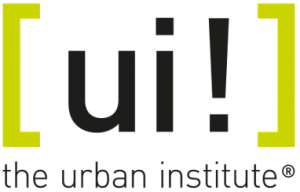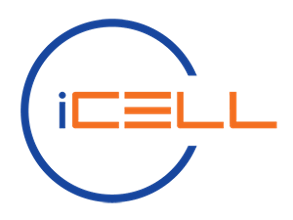A tanfolyamról
Tanfolyamunk azoknak szól, akik szeretnék megismerni az AWS világát és megoldásait a hatékony munkavégzés érdekében. Szeretettel várunk, ha gyakorlati lépéseken keresztül szeretnéd elsajátítani, hogyan tudod a felhőszolgáltatásokat a fejlesztési és üzemeltetési folyamatok gyorsítására és automatizálására használni.
Tematika
Product overview
EC2: VM as a service:
- autoscaling (mem/cpu metrics based instance start/stop)
- EBS (persistent storage)
- Images (how to create your own software stack)
- ELB (managed Load Balancer)
Virtual Networks:
- subnets
- reserved IP
- firewall rules
Management:
- CloudTrail (audit of all users AWS usage)
- CloudWatch (metrics/log collection)
- CloudFormation (aws specific “terraform”)
- LightSail: preconfigured stacks: LAMP, Nginx, MEAN and Node.js. Easier to manage than pure ec2 instances. – [optional]
Databases:
- DynamoDB (amazon’s proprietary schemaless NoSql) written in JAVA, can be self hosted, billed by per request, fully managed. -[optional]
- RDS (hosted relational db)
- postgres
- mariadb (mysql)
- oracle
- sql server
- DocumentDB (hosted mongodb) – [optional]
- ElastiCache (hosted redis) – [optional]
- Storage options, availability/speed/price:
- EBS (disk as a service)
- snapshots
- S3 (object storage, rest api, industry standard)
- EFS (nfs as a service)
- Pricing: AWS makes it really complicated:
- reserved instances (prepay for 1-3 years)
- spot price (can be 70% cheaper, with some risk)
- IAM
- Creating Roles, Policies, binding them
- authentication best practices (no root account, rotate keys, 2fa)
- Organizing teams
- Even create sub accounts
- HTTPS: learn how to use Letsencrypt. Not AWS specific, but important to
know about a free automated was of creating certificates.
Optional:
- Lambda (Serverless): no need to pay for a VM if an app is used only rarely:
- Wide range of language can be used: javascript/python/java/go …
- Lot of Infrastructure automation possibility, almost all service can trigger a lambda function
- CI/CD hook triggers
- chatops (bot listens on slack, and deploys a VM…)
- billed by 100ms
- API Gateway: rest endpoint implemented as Lambda
Application Integration:
- SQS: managed queue. Easy glue between apps / services
- SNS: manages topic/subscription service:
- system to system communication: triggers: lambda/sqs/http endpoint
- user notification: email, sms, push notification
- Elastic Beanstalk: dev uploads a bundle (jar/zip) beanstalk will create VM instance/network/ … resources automatically.
- Route53: managed DNS
Containers:
- ECS (AWS opinionated docker solution)
- EKS (managed kubernetes)
Exercises
Webserver – AWS Console
Goal: create a Webserver via the AWS provided browser based GUI.
- setup shortcuts, bookmarks, resource group
- Create Keypairs (ssh)
- start an Ubuntu/Debian instance
Webserver – cli
Goal: Same as previous exercise, but everything from the terminal
- aws sdk installation
- shell scripting basics (functions/variables/loops)
Webserver – Spot Instance
Goal: Learn how to save up to 70% of the cost for dev/qa environments.
Webserver – EBS – snapshot
Goal: learn how to use persistent disks, instead of volatile instance storage.
Create an Image
Goal: Instead of having a word docs describing what to install/configure, create a reusable blueprint.
- start with an “artisan” image (quick and dirty)
- automate it with packer
Instance Templates
Goal: Instead writing word docs about how to start an instance (which region, which instance type, how big the disk, networks, subnetworks …) his is a
prerequisite for the next:
Autoscaling and LoadBalancing
Goal: how to survive Black Friday? Automation which checks cpu/memory load metrics, and scales up/down.
Database management
Goal: Understand the pro/cons (hint: price is the only issue) of maintaining the DB or let AWS manage it.
- WebApplication the AWS way
- Static webhosting on S3
- Serverless Web app: Lambda + S3 + managed DB
- Beanstalk
- LightSail
Serverless
Goal: Understand how Lambda fits into both infrastructure glue code/ automation, and also complete applications (rest API)
Képzésvezető

Oktatóink a területükön kiemelkedő teljesítményt nyújtó szakemberek, akik sokéves tapasztalatukkal, gyakorlatorientált tréningekkel adnak át olyan tudást, amelynek segítségével hallgatóink élvezettel fejlődhetnek.
Helyszín
Online platformon vagy személyesen, igény szerint

Ők minket választottak










Ezért válassz Te is minket!
IT képzéseinket agilisan, a legfrissebb technológiai igényekhez mérten, gyakorlatorientáltan, folyamatos visszajelzésekre alapozva fejlesztjük magánszemélyek és vállalatok részére.
Szakmai csapatunk világszínvonalú fejlesztői tapasztalattal rendelkezik. Oktatóink a vállalati szférából érkeznek, a tananyag kialakításánál pedig mindig a piaci igényekből indulunk ki. Személyre szabott oktatás esetén díjmentes igényfelmérést követően a vállalati igényekhez és tudásszinthez kialakított egyedi tematikával, tanrenddel dolgozunk. Eredménycentrikus megoldásokkat kínálunk, amelyek minden esetben partnereink üzleti céljait szolgálják. Küldetésünknek tekintjük, hogy olyan IT tudást és szemléletet adjunk át hallgatóinknak, amelyeket élvezettel használhatnak saját énjük komplexebbé tétele érdekében.
Információ

Laczkó Gábor
gabor.laczko@stylersgroup.com
+36 (20) 416 – 1932

Jagos Orsolya
orsolya.jagos@stylersgroup.com
+36 (30) 705 – 0973


